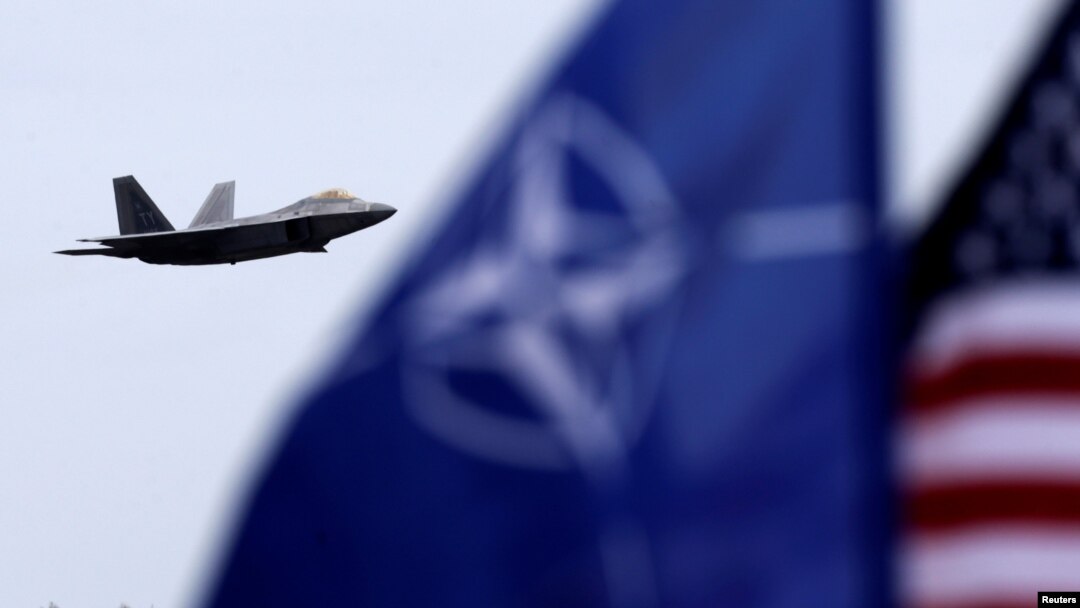After a meeting of NATO foreign ministers in Brussels on March 4, alliance chief Jens Stoltenberg said that its planes should not fly in Ukraine's airspace during the conflict with Russia, despite pleas from Kyiv to enforce a no-fly zone over the country.
Western leaders have -- so far -- dismissed the idea of a no-fly zone, fearing that it would lead to a greater escalation of the war. Speaking to two military experts, RFE/RL takes a closer look at what a no-fly zone would mean, why it could prove so difficult to impose over Ukraine, and if there are other, similar options that could be considered.
What Is A No-Fly Zone?
A no-fly zone is an area of airspace -- either an entire country or parts of it -- where no airplanes or any other airborne objects other than those policing the airspace are allowed to fly. They are usually put in place to protect civilians on the ground during a war and to allow the safe delivery of humanitarian aid.
This type of air policing has in the past been endorsed by the United Nations, for example in Bosnia-Herzegovina in 1992 or the Libyan conflict in 2011, and in both instances NATO was tasked with the enforcement. UN backing, however, is not always necessary. During the 1991 Gulf War, it was the United States and its allies that set up two no-fly zones in the northern and southern parts of Iraq to protect minorities there.
What Is Needed To Enforce A No-Fly Zone?
One crucial component to control the airspace 24/7 is an airborne warning and control system (AWACS) -- essentially an "eye in the sky." AWACS aircraft function as airborne radar systems that detect everything from other aircraft to missiles, even those fired from considerable distances away.
In addition to monitoring, fighter aircraft are needed to enforce a no-fly zone. Ben Hodges, who was the commander of the U.S. Army Europe and now works for the U.S.-based Center for European Policy Analysis, said: "You'd have aircraft that are prepared for air-to-air [combat], to shoot down other aircraft. You'd have aircraft that are prepared to shoot down drones and you would want to be prepared to have other aircraft that are prepared to hit ground targets, air defense, for example. So, there's a mix of capabilities that you would need, including the AWACS and including the helicopters that would be used to go in and rescue [potentially downed pilots]."
Can A No-Fly Zone Be Imposed Over Ukraine Now?
It's unlikely. The reason? Russian and Western fears of engaging each other's military in the skies -- a situation that could significantly escalate the war. Petr Pavel, a retired Czech Army general who has served as the chairman of the NATO Military Committee, points out that a no-fly zone could not be "imposed because it will be immediately explained as a war between NATO and Russia. It will have the same impact as if NATO troops would join Ukrainian troops in fighting Russian troops on the ground."
The same is true if a single NATO member, such as the United States, tried to set up a no-fly zone on its own. "Once any individual country of NATO or NATO as an organization joins Ukraine in fighting the Russians, it's in fact a declaration of war between Russia and NATO," Pavel said. "We would find ourselves in a situation of much greater conflict with many more weapons, up to the possibility of the use of nuclear weapons from Russia."
According to Hodges, there are other reasons to be cautious. "We would never put pilots up in the air if we were not prepared to destroy enemy air defenses on the ground. So now you're talking about shooting, attacking Russian ground targets inside Ukraine and probably even inside Russia," Hodges said.
"And then another consideration is that we would never put pilots in the air if we were not prepared to go in and pick them up if they were shot down and had to parachute. So, you've got to have the possibility of picking up a naval pilot on the ground in Ukraine or even in Russia."
But Could A Partial No-Fly Zone Be Imposed To Allow In Humanitarian Aid?
That would probably depend on Russia. "If it is to be a humanitarian operation, it would have to be agreed by the Russians because if it is not agreed, the Russians might shoot down a humanitarian flight," Pavel said. "So once we have an agreement on a no-fly zone for humanitarian purposes from both sides, then it's OK."
How Is This Different To No-Fly Zones Set Up In Libya And Iraq?
Crucially in Libya and Iraq, Russia was not opposed to no-fly zones -- agreeing with the international community at the time that they were necessary to protect the civilian population on the ground. Former U.S. commander Hodges does not rule out that NATO could intervene at a later date. "There may come a point where the alliance says we can't just stand by like Srebrenica and allow Ukrainians to be murdered like this," Hodges said.
"But again, you know, what makes the [NATO] alliance great is you got the diplomatic, economic, and military power of 30 nations. But that means you've got to keep all 30 together. And so it would take that kind of consultation before we get to that decision."


